The Story of the Kelly Gang is a 1906 Australian silent film that traces the exploits of 19th-century bushranger and outlaw Ned Kelly and his gang. It was directed by Charles Tait and shot in and around the city of Melbourne. The film ran for more than an hour with a reel length of about 1,200 metres (4,000 ft), making it the longest narrative film yet seen in the world. It was first shown at Melbourne's Athenaeum Hall on 26 December 1906 and premiered in the United Kingdom in January 1908. A commercial and critical success, it is regarded as the origin point of the bushranging drama, a genre that dominated the early years of Australian film production. Since its release, many other films have been made about the Kelly legend.
| The Story of the Kelly Gang | |
|---|---|
Poster for film's 1910 re-release | |
| Directed by | Charles Tait |
| Produced by | William Gibson Millard Johnson John Tait Nevin Tait |
| Written by | Charles Tait John Tait |
| Based on | possibly the play The Kelly Gang by Arnold Denham |
| Starring | Elizabeth Tait John Tait |
| Distributed by | J & N Nevin Tait |
Release date |
|
Running time | 60 minutes |
| Country | Australia |
| Language | Silent |
| Budget | £400–£1,000 |
| Box office | £25,000 |
In 2007, The Story of the Kelly Gang was inscribed on the UNESCO Memory of the World Register for being the world's first full-length narrative feature film.
Screenplay
Australian bushranger Ned Kelly had been executed only twenty-six years before The Story of the Kelly Gang was made, and Ned's mother Ellen and younger brother Jim were still alive at the time of its release. The film was made during an era when plays about bushrangers were extremely popular, and there were, by one estimate, six contemporaneous theatre companies giving performances of the Kelly gang story. Historian Ian Jones suggests bushranger stories still had an "indefinable appeal" for Australians in the early 20th century.
The Story of the Kelly Gang was made by a consortium of two partnerships involved in theatre—entrepreneurs John Tait and Nevin Tait, and pioneering film exhibitors Millard Johnson and William Gibson. The Tait family owned the Melbourne Athenaeum Hall and part of their concert program often included short films. Melbourne film exhibitors Johnson and Gibson also had technical experience, including developing film stock. Credit for writing the film scenario is generally given to brothers Frank, John and sometimes Charles Tait. At a time when films were usually shorts of five to ten minutes duration, their inspiration for making a film of at least sixty minutes in length, and intended as a stand-alone feature, was undoubtedly based on the proven success of stage versions of the Kelly story.
Film historians Andrew Pike and Ross Cooper have noted that at the time, the filmmakers were unaware of the historical importance of the film they were making, and only much later "poured forth their memories." Unfortunately, "with the passage of time and the desire to make a good story of it" they "created a maze of contradictory information."
For example, in later years, William Gibson claimed that while touring through New Zealand showing the bio-pic Living London, he noticed the large audiences attracted to Charles McMahon's stage play The Kelly Gang. Film historian Eric Reade claimed the Taits themselves owned the stage rights to a Kelly play, while actors Sam Crewes and John Forde later also claimed to have thought of the idea of a making a film of the Kelly Gang's exploits, inspired by the success of stage plays.
There is evidence that at least one other bushranging film had been made before 1906. This was Joseph Perry's 1904 short Bushranging in North Queensland, made by the Salvation Army's Limelight Department in Melbourne, one of the world's first film studios.
There is considerable uncertainty over who appeared in the film and a number of unsubstantiated claims have been made regarding participation. According to the Australian National Film and Sound Archive, the only actors positively identified are;
- John Forde as Dan Kelly
- Elizabeth Tait as the stunt double for the actress playing Kate Kelly
Others thought to be in the film include
- Frank Mills, as the title character Ned Kelly
- John and Frank Tait, Harriet Tait, members of Charles Tait's family.
- J. (Jack) Ennis, as Steve Hart
- Will Coyne, as Joe Byrne
In her memoirs, Viola Tait claimed the part of Ned was played by a Canadian stunt actor, who deserted the project part way through.
Shooting of the film reportedly involved a budget variously estimated between £400 (Gibson) and £1,000 (Tait) and took six months. While it is now commonly accepted that the Tait's experienced older brother Charles directed the film, only ten years after it was made, pioneer Australian director W. J. Lincoln claimed it was actually "directed by Mr Sam Crews , who... worked without a scenario, and pieced the story together as he went along." Lincoln also claimed that "the principal characters were played by the promoters and their relatives, who certainly made no pretensions to any great histrionic talent."
Viola Tait's memoirs, published in the early 1970s, identifies Charles as being chosen as director because of his theatrical experience. Her account confirmed that many of the extended Tait family and their friends appeared in scenes.
Millard Johnson was camera operator.
Much of the film was shot on the property of Elizabeth Tait's family (Charles' wife) at Heidelberg, now a suburb of Melbourne. Other scenes in the film may have been shot in the suburbs of St Kilda (indoor scenes), and possibly Eltham, Greensborough, Mitcham, and Rosanna. The Victoria Railways Department assisted by providing a train.
Costumes were possibly borrowed from E. I. Cole's Bohemian Company, and members of the troupe may have also performed in the film. According to Viola Tait, Sir Rupert Clarke loaned the suit of Kelly armour his family then owned for use in the film.
Film historian Ina Bertrand suggests that the tone of The Story of the Kelly Gang is "one of sorrow, depicting Ned Kelly and his gang as the last of the bushrangers." Bertrand identifies several scenes that suggest considerable film making sophistication on the part of the Taits. One is the composition of a scene of police shooting parrots in the bush. The second is the capture of Ned, shot from the viewpoint of the police, as he advances. A copy of the programme booklet has survived, containing a synopsis of the film, in six 'scenes'. The latter provided audiences with the sort of information later provided by intertitles, and can help historians imagine what the entire film may have been like.
According to the synopsis given in the surviving programme, the film originally comprised six sequences. These provided a loose narrative based on the Kelly gang story.
- Scene 1: Police discuss a warrant for Dan Kelly's arrest. Later, Kate Kelly rebuffs the attentions of a Trooper.
- Scene 2: The killings of Kennedy, Scanlon and Lonigan at Stringybark Creek by the gang.
- Scene 3: The hold-up at Younghusband's station and a bank hold–up.
- Scene 4: Various gang members and supporters evade the police and the gang killing of Aaron Sherritt.
- Scene 5: The attempt to derail a train and scenes at the Glenrowan Inn. The police surround the hotel, Dan Kelly and Steve Hart "die by each other's hands" after Joe Byrne is shot dead.
- Scene 6: The closing scenes. Ned Kelly fights hard but is shot in the legs. "He begs the Troopers to spare his life, thus falls the last of the Kelly Gang…"
Some confusion regarding the plot has emerged as a result of a variant poster dating from the time the film was re-released in 1910. The similar (but different) photos suggest that either the film was being added to for its re-release, or an entirely new version was made by Johnson and Gibson, as the poster proclaims. In addition, a film fragment (" the Perth fragment ") exists, showing Aaron Sherritt being shot in front of an obviously painted canvas flat. This is now thought to be from a different film altogether, perhaps a cheap imitation of The Story of the Kelly Gang made by a theatrical company, keen to cash in on the success of the original, or an earlier bushranger short.
The film was given a week of trial screenings in country towns in late 1906. This proved enormously successful and the movie recouped its budget for these screenings alone.
Its Melbourne debut was made at the Athenaeum Hall on 26 December 1906. It ran for five weeks to full houses, local papers noting the extraordinary popularity of the film. Although the country screenings had been silent, when the film was screened in Melbourne it was accompanied by live sound effects, including blank cartridges as gunshots and coconut shells beaten together to simulate hoofbeats. At later screenings a lecturer would also narrate the action. These additions were well-received by the theatre critic for Melbourne Punch, who stated that they greatly enhance the film's realism. He went on to say:
All the notable features of the story of the Kellys are reproduced, and with the dialogue make up a sensational and realistic series dealing with the murders, robberies and misdeeds which are not the air-created fancies of a penny-dreadful writer, but actual facts which are well within the memory of our citizens.
Comparing the film to other artistic depictions of the Kelly saga, one Adelaide critic wrote that it conveys "a far more vivid impression of the actual life and deeds of the Kellys than letterpress and stagecraft combined."
Many groups at the time, including some politicians and the police, interpreted the film as a glorification of criminality. The film was banned in "Kelly Country"—regional centres
Watch movie The Story Of The Kelly Gang online on Amazon
Watch movie The Story Of The Kelly Gang online
Watch The Movie On PrimeDharmatma Full HD Movie Download
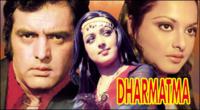
Namak Halal Full HD Movie Download
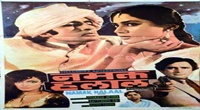
Rokkk Full HD Movie Download
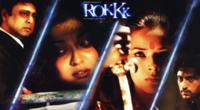
Deewangee (2002) Full HD Movie Download
.jpg)
Aankhen (1993) Full HD Movie Download
.jpg)
Hotel (1981) Full HD Movie Download
.jpg)
Shikari-The Hunter Full HD Movie Download
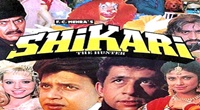
Nai Rat Nai Bat Full HD Movie Download
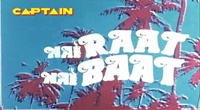
Praadeshikavaarthakal Full HD Movie Download
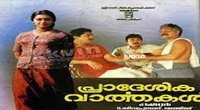
Decoys Full HD Movie Download
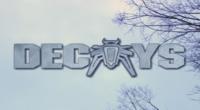
Kaaval Nilayam Full HD Movie Download
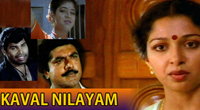
Chitti Chellelu Full HD Movie Download
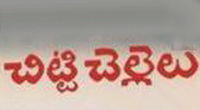
Gali Medalu Full HD Movie Download
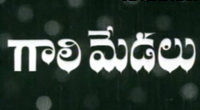
Rustum Full HD Movie Download
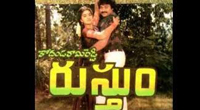
Killar Jhansi Full HD Movie Download
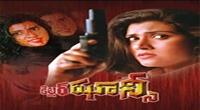
Devadasu Full HD Movie Download
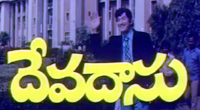
Terminator 2 Judgment Day Full HD Movie Download
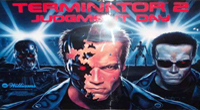
Awaaz Full HD Movie Download
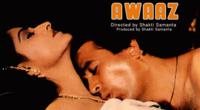
Dil Bole Hadippa! Full HD Movie Download
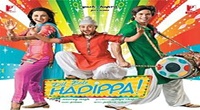
Neal n Nikki Full HD Movie Download

Pyaar Impossible Full HD Movie Download

Download latest Movie from bollywood
- 1> baaghi 3
- 2> THE SKY IS PINK MOVIE FULL STORY AND REVIEW
- 3> Luka Chuppi
- 4> TO ALL THE BOYS I’VE LOVED BEFORE
- 5> Kabir Singh
- 6> Street Dancer 3D
- 7> Simmba
- 8> Gone Girl
- 9> The Girl Who Lived
- 10> Ludo
- 11> DILWALE DULHANIA LE JAYENGE
- 12> GUILTY
- 13> The Godfather
- 14> Adventures of Rusty
- 15> Sooryavanshi
- 16> Satyameva Jayate 2
- 17> Thappad
- 18> Bhool Bhulaiyaa 2
- 19> KGFChapter 2
- 20> Mardaani 2
- 21> Pinjar
- 22> Shivaji maharaj
- 23> Ek Villian 2
- 24> Hungama 2
- 25> Divergent
- 26> Mumbai Saga
- 27> The Internship
- 28> HIT (telugu)
- 29> Panga
- 30> The perfect date
- 31> 16 December
- 32> Gopala Gopala (Telugu)
- 33> Brahmastra
- 34> Gangubai Kathiawadi
- 35> Manmadhudu
- 36> Nenu local
- 37> Mahanati
- 38> Shatamanam bavathi
- 39> Lagaan
- 40> After
- 41> MOM
- 42> Shamshera
- 43> Raguvaran BTech
- 44> Khakee
- 45> The villain
- 46> OM
- 47> Mr. perfect
- 48> Bueatifull mind
- 49> Hichki
- 50> Gabbar Singh
- 51> Jogi
- 52> Before Sunrise
- 53> Before Sunset
- 54> Before Midnight
- 55> The Big Bull
- 56> Top Gun: Maverick
- 57> The Purge
- 58> The Sky is Pink
- 59> Laxmmi Bomb
- 60> Sadak 2
- 61> Sufna
- 62> Prithviraj
- 63> PK
- 64> Coolie No 1(2020)
- 65> Black Widow
- 66> Dear Zindagi
- 67> Dil Bechara
- 68> PHIR HERA PHERI
- 69> WAR
- 70> Dostana
- 71> RRR: Roudram Ranam Rudhiram
- 72> Maidan
- 73> Dabbang 3
- 74> Chhalaang
- 75> life as we know it
- 76> SherShaah
- 77> Sandeep Aur Pinky Faraar
- 78> Event Horizon
- 79> 83
- 80> Radhe: Your Most Wanted Bhai
- 81> Gunjan Saxena: The Kargil Girl
- 82> Mr India
- 83> Vivah
- 84> Anokha Bandhan
- 85> Ghost
- 86> Bhoot: Part One - The Haunted Ship
- 87> Haseen Dilruba
- 88> Laal Singh Chaddha
- 89> Qismat
- 90> Rajput
- 91> Drive
- 92> Dil Chahta Hai
- 93> Dil Ki Baazi
- 94> Dil Ka Rishta
- 95> Teesri Manzil
- 96> Dil
- 97> Love Aaj Kal
- 98> Khaali Peeli
- 99> Bunty Aur Babli 2
- 100> Atrangi Re
- 101> Gulabo Sitabo
- 102> Jodi
- 103> Suraj Pe Mangal Bhari
- 104> Deewana
- 105> Attack
- 106> Sardar Udham Singh
- 107> Toofan
- 108> THE LOVEBIRDS
- 109> Jersey
- 110> Ginny Weds Sunny
- 111> Thalaivi
- 112> Shiddat
- 113> Angels vs Zombies
- 114> Koi Mil Gya
- 115> Thank God
- 116> Bhuj: The Pride of India
- 117> Hum Aapke Hain Kaun
- 118> The Platform
- 119> Bird Box
- 120> Roohi Afzana
- 121> Torbaaz
- 122> Nikamma
- 123> World War Z
- 124> Extraction
- 125> Train to Busan
- 126> Life of Pi
- 127> SHAADI MEIN JROOR AANA
- 128> Himmat Aur Mehnat
- 129> To All The Boys: P.S. I Still Love You
- 130> Mimi
- 131> Good Newwz
- 132> Shubh Mangal Zyada Saavdhan
- 133> Raabta
- 134> Harry Potter and the Philosopher's Stone
- 135> Harry Potter and the Chamber of Secrets
- 136> Chhapaak
- 137> War of the Worlds
- 138> Harry Potter and the Prisoner of Azkaban
- 139> Harry Potter and the Goblet of Fire
- 140> MURDER MYSTERY
- 141> Shakuntala Devi
- 142> Bachchan Pandey
- 143> Jayeshbhai Jordar
- 144> Sheer Qorma
- 145> Saina
- 146> 'O' Pushpa I hate tears
- 147> Kedarnath
- 148> MS Dhoni The Untold Story
- 149> Chhichhore
- 150> Badhaai Ho
- 151> Unstoppable
- 152> Oz the Great And Powerful
- 153> The Girl on the Train
- 154> Haathi Mere Saathi 2020
- 155> The Conjuring: The Devil Made Me Do It
- 156> Gandhi Se Pehle Gandhi
- 157> The Song of Scorpions
- 158> Srimanthudu
- 159> Hello Guru Prema Kosame
- 160> Beauty and The Beast
- 161> Black Panther
- 162> Charlie and the Chocolate Factory
- 163> Bole Chudiyan
- 164> Fidaa
- 165> Duvvada Jagannadham
- 166> Bruce Lee: The Fighter
- 167> Hyper
- 168> Yaara
- 169> Red (2020)
- 170> Shivam
- 171> That Is Mahalakshmi
- 172> Nishabdham
- 173> Aashram 2020 web series
- 174> Laxmii
- 175> Mismatched
- 176> STUDENT OF THE YEAR 2
- 177> NAIL POLISH
- 178> Ramprasad Ki Tehrvi
- 179> KAAGAZ
- 180> 12 o Clock
- 181> The Power
- 182> bolo hau
- 183> Tribhanga
- 184> JAMUN
- 185> Madam Chief Minister
- 186> Maasaab
- 187> Aadhaar
- 188> Tanhaji
- 189> Bhaagi 3
- 190> Bhootnath
- 191> MALANG
- 192> Jai Mummy Di
- 193> Haathi Mere Saathi 2021
- 194> Shakeela
- 195> Unpaused
- 196> Annayya
- 197> Vamsoddharakudu
- 198> Mrugaraju
- 199> Narasimha Naidu
- 200> Sankranti
- 201> Manasu Maata Vinadhu
- 202> Anjaane
- 203> Apaharan
- 204> Bachke Rehna Re Baba
- 205> Bewafaa
- 206> Roohi
- 207> Radhe
- 208> Zindagi Khoobsoorat Hai
- 209> Yeh Mohabbat Hai
- 210> Yeh Kya Ho Raha Hai?
- 211> The Tomorrow War
- 212> DehradunDiary
- 213> Meri Shaadi Karaoo
- 214> Matruu Ki Bijlee Ka Mandola
- 215> No One Killed Jesica
- 216> Aag Ka Goola
- 217> Eight Million Dollars
- 218> Three Hundred
- 219> Cats and Dog
- 220> Decoy
- 221> Gold Rush
- 222> You Have Got Mail
- 223> Final Destination three
- 224> Tofan
- 225> Jungle
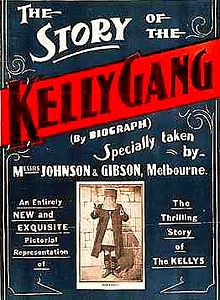 Story of movie The Story Of The Kelly Gang :
Story of movie The Story Of The Kelly Gang : 